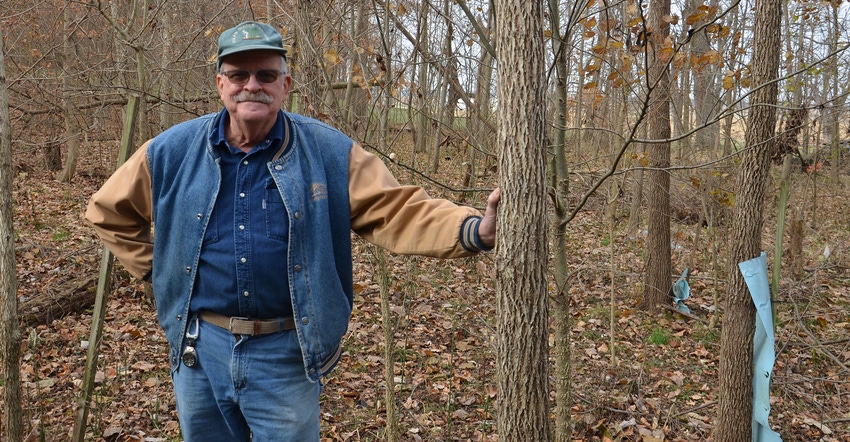
Ray Chattin often carries a spray bottle when he walks through his woods. If you’re a sprig of Asian honeysuckle, wintercreeper or burning bush, you’ll likely get a healthy dose of herbicide strong enough to take you down. Chattin wants to see trees in his woods, not an understory filled with plants that choke out desirable saplings and native species.
“We have declared war on invasive species,” says Chattin, a Vincennes, Ind., farmer and timber producer. He operates his own sawmill, primarily sawing lumber from his woods. He is also an associate supervisor on the Knox County Soil and Water Conservation District board of supervisors, and a member of the Indiana State Soil Conservation Board.
“When we talk about invasive species, we’re talking about serious stuff,” he says, bristling. “Several invasive plants are taking over woodlots and forests right now, and many people don’t even realize it.”
Invasive means invasion
By definition, an invasive species is one not native to Indiana. Many were introduced with good intentions, sometimes even by government agencies, before people realized they could get out of control and harm pastures and woodlands.
Classic examples include multiflora rose and johnsongrass. One species Chattin worries about today is autumn olive, once recommended for wildlife plantings. Various forms of honeysuckle also get out of control and can take over the understory of a woodlot, sending vines up trees and choking out new trees from growing.
Even seemingly innocuous species planted for landscapes, such as Bradford pear trees and burning bush, can cause problems once they grow wild, Chattin says. Birds carrying seeds are one of the primary ways invasive plants spread.
“They don’t just harm woodlots,” he continues. “They can interrupt life cycles for wildlife by changing the vegetation in an area so that it’s no longer favorable for foraging or nesting.”
Take action
A group of volunteers formed a 35-county organization several years ago to begin educating people about the threat of invasive species, and engaging people in projects to control them in key areas. Troy Hinkle, a Knox County SWCD employee, works closely with Southern Indiana Cooperative Invasives Management, more commonly known as SICIM.
In Knox County he’s aided by Willem Drews, also a Knox County SWCD employee. Drews devotes most of his time to educating people about invasive species.
The Indiana State Soil Conservation Board has awarded Clean Water Indiana grants to aid SICIM in its efforts, and to support invasive species control in other parts of Indiana.
SICIM is actually a very large cooperative invasive species management area, or CISMA. Currently, there are three other CISMA groups within Indiana, Hinkle says.
The drive to fight back against invasive species got a real boost late last year when the Natural Resources Conservation Service partnered with SICIM. Shannon Zezula, state resource conservationist with NRCS, says the goal is to promote formation of a CISMA in every county in Indiana. NRCS has ponied up more than $900,000 toward the effort.
Clean Water Indiana grants will help SICIM complete the 50% cost-share required by the matching grant.
“We’ve got a disaster happening in Indiana, and we’ve got to act,” Chattin says. “Hopefully this assistance will help people form groups and develop control strategies.”
About the Author(s)
You May Also Like




